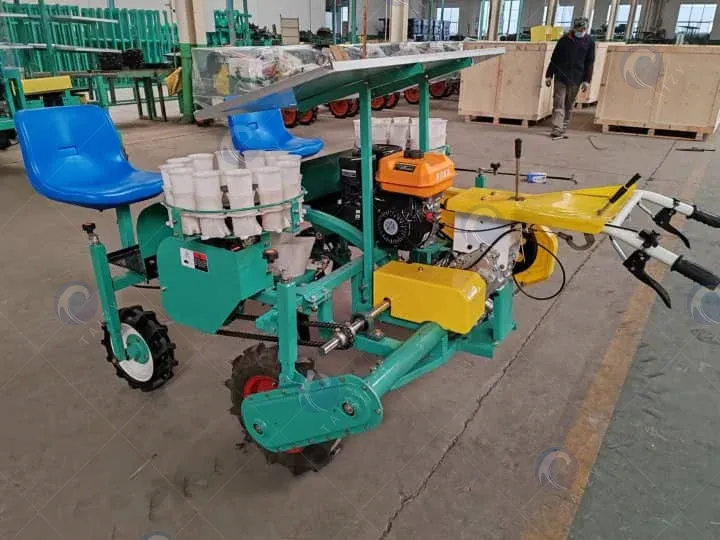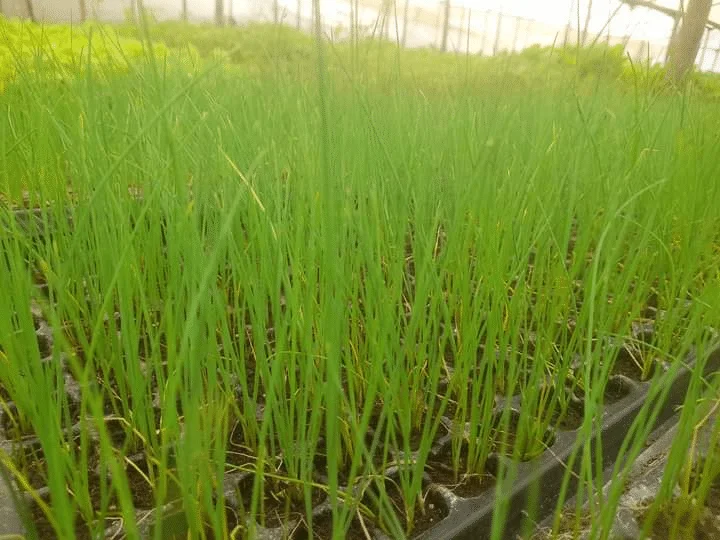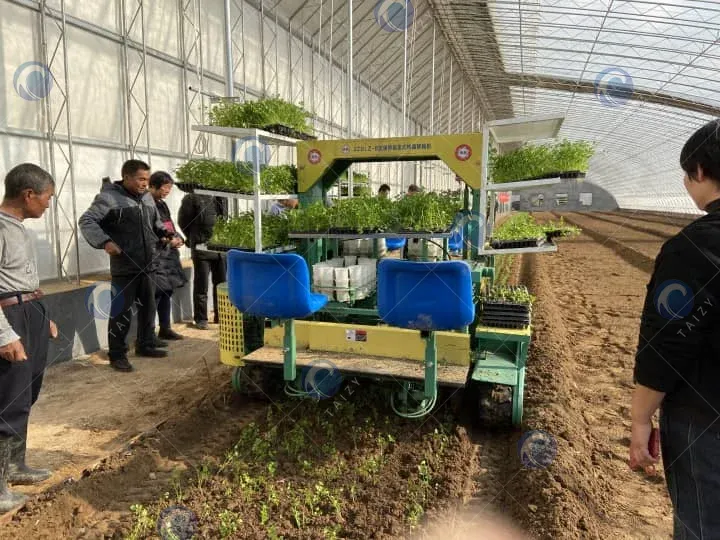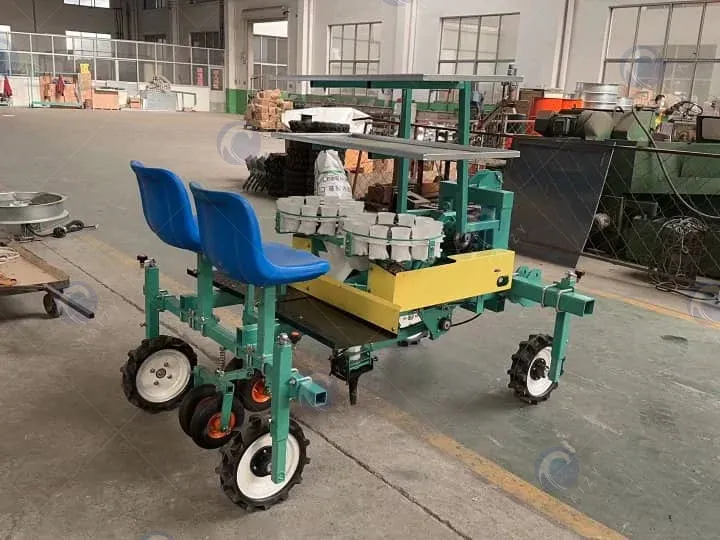การย้ายกล้าผักเป็นส่วนสำคัญของการผลิตทางการเกษตรสมัยใหม่ และวิธีการย้ายที่ถูกต้องไม่เพียงแต่ช่วยเพิ่มอัตราการรอดตายเท่านั้น แต่ยังช่วยให้พืชเจริญเติบโตอย่างแข็งแรงอีกด้วย ต่อไปนี้คือ 8 ขั้นตอนสำคัญในการย้ายกล้าผักด้วยเครื่องย้ายกล้าของ Taizy transplanters.
ขั้นตอนที่ 1: เลือกต้นกล้าที่ถูกต้อง
ก่อนการปลูกถ่ายคุณต้องเลือกต้นกล้าด้วยระบบรากที่ได้รับการพัฒนาอย่างดีลำต้นหนาและใบที่มีสุขภาพดีเพื่อให้แน่ใจว่าอัตราการรอดชีวิตและอัตราการเติบโตหลังจากการปลูกถ่าย

ขั้นตอนที่ 2: เตรียมที่ดิน
ก่อนการปลูกถ่ายทุ่งจำเป็นต้องได้รับการปลูกฝังปฏิสนธิและเตรียมพร้อมเพื่อให้แน่ใจว่าดินนั้นนุ่มและปฏิสนธิอย่างสม่ำเสมอ สำหรับการปลูกขนาดใหญ่คุณสามารถใช้เครื่องจักรกลการเกษตรเชิงกลเพื่อการเตรียมที่ดินที่มีประสิทธิภาพเช่นไถนาหมุน
ขั้นตอนที่ 3: ตั้งระยะห่างแถวและระยะห่างของพืช
ปรับระยะห่างแถวและระยะห่างจากพืชของ transplanter ตามความต้องการการปลูกของพืชที่แตกต่างกัน transplanter ต้นกล้า Taizy สามารถปรับระยะห่างของแถวและระยะห่างจากพืชตามความต้องการของลูกค้าซึ่งเหมาะสำหรับความต้องการในการปลูกผักของคุณ
ยกตัวอย่างการย้ายกล้าหอมแดง เครื่องย้ายกล้าผัก vegetable transplanter machine โดยทั่วไปมี 4 แถว 6 แถว 8 แถว 10 แถว และ 12 แถว ระยะปลูกและระยะแถวที่นิยมคือ 15*15 ซม. 10*10 ซม. และ 15*10 ซม. หากต้องการรายละเอียดเพิ่มเติม โปรดติดต่อเราได้ตลอดเวลา!


ขั้นตอนที่ 4: การติดตั้งระบบชลประทานแบบหยด (ไม่บังคับ)
หากสภาพแวดล้อมการปลูกต้องการการชลประทานที่ดีระบบชลประทานแบบหยดสามารถติดตั้งบนเครื่องแปลงสภาพและเครื่องปลูกถ่ายของเราสามารถช่วยให้บรรลุเป้าหมายนี้ได้ ระบบชลประทานแบบหยดสามารถติดตั้งบนเครื่องแปลงสภาพในเวลาเดียวกันของการปลูกถ่ายซึ่งช่วยประหยัดต้นทุนการชลประทานที่ตามมาและปรับปรุงการใช้ทรัพยากรน้ำ
ขั้นตอนที่ 5: การดำเนินการปลูกถ่าย
การเริ่มต้น transplanter taizy เครื่องสามารถขุดรูและวางต้นกล้าได้อย่างถูกต้อง การปลูกถ่ายทั้งสามประเภทของเรา (การติดตามการปลูกถ่ายที่ขับเคลื่อนด้วยตนเองและการปลูกถ่ายรถแทรคเตอร์) สามารถปรับให้เข้ากับภูมิประเทศที่แตกต่างกันและความต้องการในการปลูก

ขั้นตอนที่ 6: การรดน้ำเพื่อรวมต้นกล้า
หลังจากการปลูกถ่ายต้องมีการรดน้ำ ใช้ระบบปั๊มรดน้ำแยกต่างหากหรือ transplanter ด้วยการรดน้ำสำหรับต้นกล้าเพื่อลดการสูญเสียน้ำและปรับปรุงการอยู่รอด
ขั้นตอนที่ 7: ตรวจสอบคุณภาพการปลูกถ่าย
หลังจากการปลูกถ่ายให้ตรวจสอบความเที่ยงตรงระยะห่างและความครอบคลุมของรากของต้นกล้าเพื่อให้แน่ใจว่าผลการปลูกเป็นไปตามที่คาดไว้ เครื่อง transplanter Taizy มีความแม่นยำสูงและสามารถปรับปรุงความสอดคล้องของการปลูกได้อย่างมีประสิทธิภาพ
ขั้นตอนที่ 8: การจัดการภาคสนาม
หลังจากการปลูกต้นกล้าผักคุณต้องตรวจสอบความชื้นในดินเป็นประจำป้องกันและควบคุมศัตรูพืชและโรคและตามด้วยปุ๋ยในเวลาที่เหมาะสมเพื่อให้แน่ใจว่าการเจริญเติบโตของพืชและผลผลิตเพิ่มขึ้น
สรุป
เครื่องย้ายกล้าผัก Taizy สามารถย้ายกล้าผักได้อย่างมีประสิทธิภาพ แม่นยำ และอัตโนมัติ ตั้งแต่การเตรียมดินจนถึงการย้ายเสร็จสิ้น ทำให้เป็นโซลูชันแบบครบวงจร ช่วยลดต้นทุนแรงงานและเพิ่มประสิทธิภาพการผลิตทางการเกษตรได้อย่างมาก หากคุณกำลังมองหาอุปกรณ์ย้ายกล้าที่เหมาะสม ยินดีให้คำปรึกษา!

